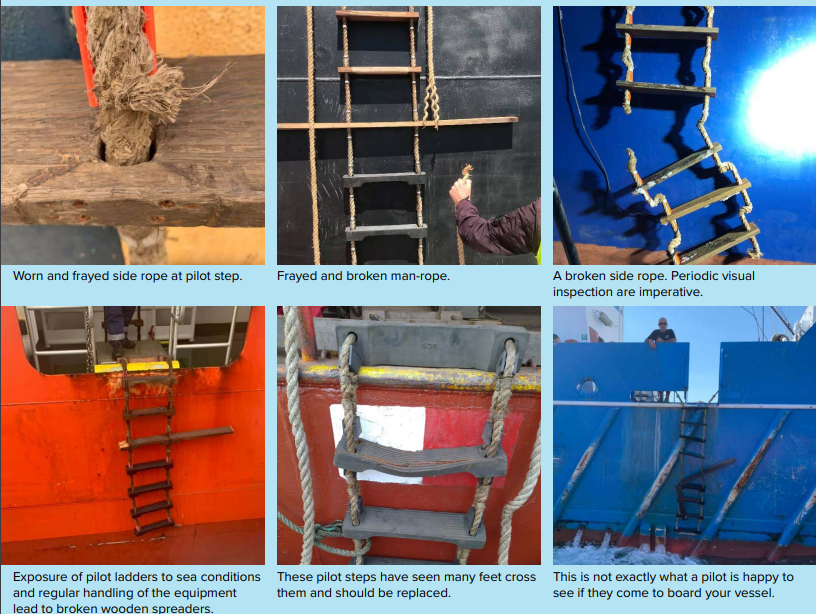Check pilot ladder condition before every use
페이지 정보
작성자 최고관리자 댓글 0건 조회 850회 작성일 21-10-19 09:44본문
Lessons learned: Check pilot ladder condition before every use
by The Editorial Team
As part of American Club’s Good Catch safety guidance, the club highlights the importance of pilot ladder safety following the increase in marine pilot incidents.
There has been a tragic increase in marine pilot fatalities in recent months and pilots around the globe are paying particular attention to the conditions of pilot ladders of the vessels they board.
Many have refused to board vessels where ladders are in poor working condition. The American Club has reached out to the marine pilot community regarding some of the main concerns they have with pilot ladder arrangements.
Your safety as well as the safety of your fellow crew mates is every crewperson’s responsibility. The same responsibilities apply to those visiting your vessel, including marine pilots.
 Credit:
American Club
Credit:
American Club
- SOLAS regulation V/23, Pilot Transfer Arrangements, set forth the standards and requirements for boarding arrangements, responsibility of ship’s personnel in rigging pilot transfer equipment, associated pilot transfer equipment, clear access and lighting.
-
- Before every use, and before every rigging of a pilot ladder, attention is to be paid by the responsible officer to the overall condition of the pilot ladder. Due to the work pressure on ship’s crews, the condition of the pilot ladder can be overlooked and loose or missing chocks, dirty ropes and steps, even damaged steps are found in some cases.
-
- Keeping a watchful eye out for pilot ladders that may be in poor condition is everyone’s responsibility. Keep that watchful eye on your vessel and avoid conditions seen in these photos captured by safety conscious pilots around the globe.
---------------------------------------------------------------------------------
Lessons learned from pilot ladder that did not meet SOLAS standards
by The Editorial Team
CHIRP reports an incident concerning a pilot ladder that did not meet SOLAS standards.
The incident
The pilot ladder had a broken strand. This was not visible before the pilot started to climb the ladder, as it was located at the top. However, it was clearly visible to the ship’s staff.
The Master was advised that the ladder must never be used again and must be taken out of service and destroyed.
Damage to pilot ladder side ropes is often caused by the ladder not being stowed away off the deck in a safe, well-ventilated storage locker. By being left in the open, the ladder is liable to damage by crushing or abrasion or can be damaged by chemicals, or cargo dust residues which can also chemically and physically attack the rope fibres.
Human factors
- Complacency: Check if everything is really ok.
- Culture: Does everyone really care about safety? How do you know?
- Capability: Is your team capable of spotting defects?



